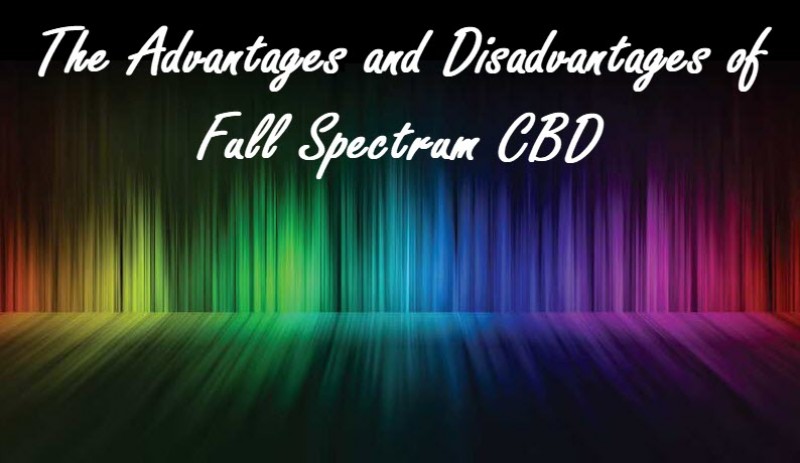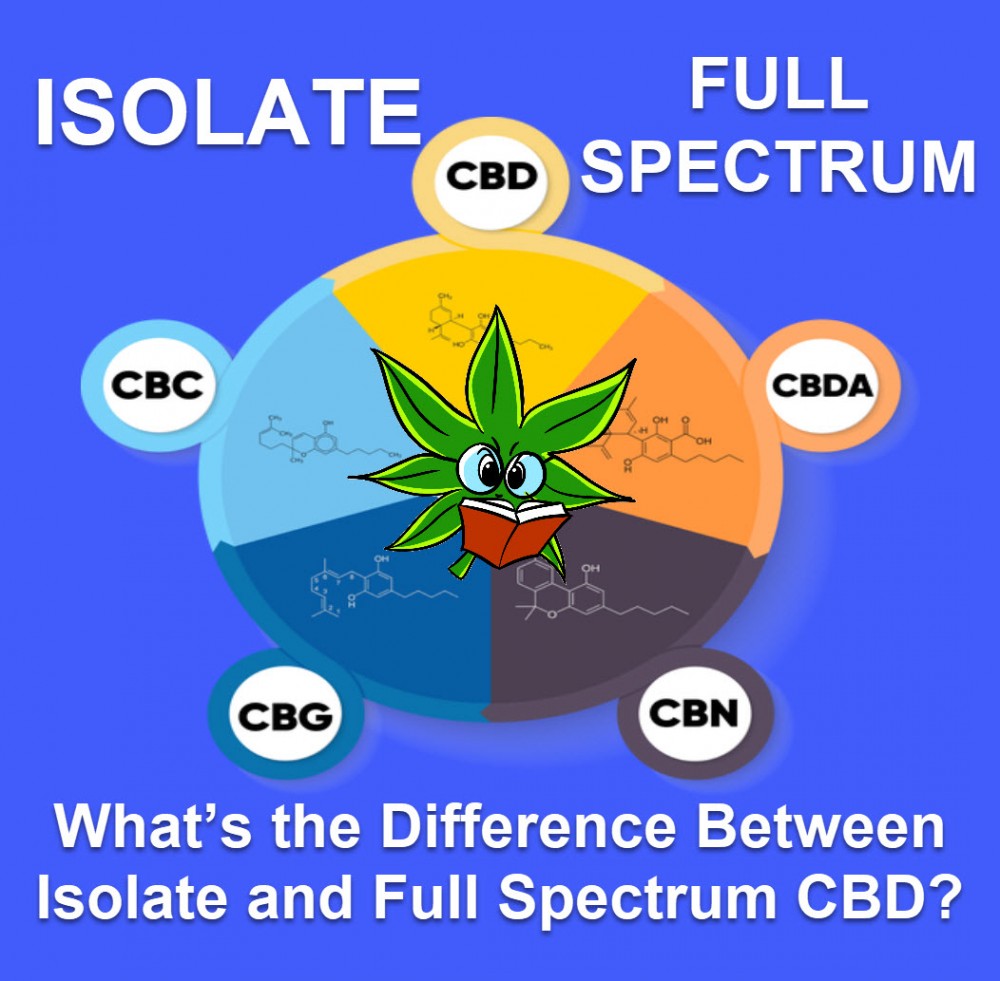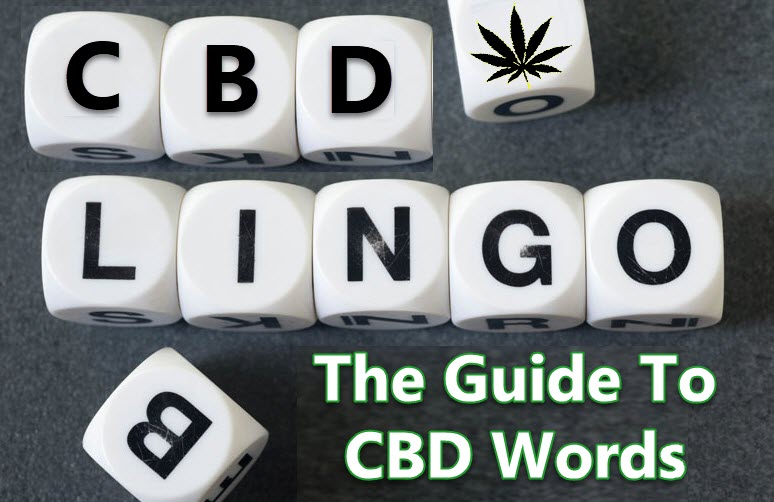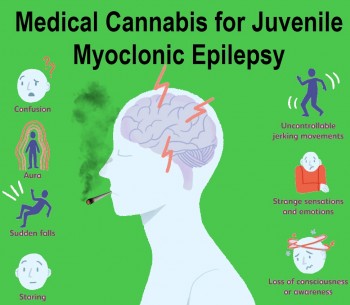The advantages & disadvantages of full-spectrum CBD
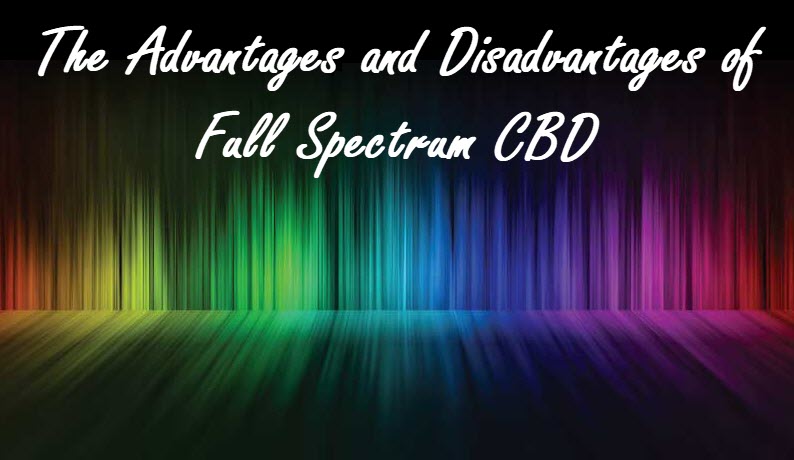
Full spectrum. Isolate. Broad spectrum. To the uninitiated, these terms may seem as foreign as another language, but dig a little deeper and you’ll find that these are just terms used to describe the different varieties of CBD and cannabis products according to their degree of processing and extraction. In this article, we’ll delve into one kind in particular: full-spectrum CBD, and the advantages and disadvantages in choosing this product over others.
When a product is referred to as full-spectrum, this means that it contains all the different compounds (terpenes, flavonoids) and cannabinoids (of which there are more than 100) the cannabis plant has to offer. Recently, cannabis experts have started advocating whole plant extractions due to a mechanism called the ‘entourage effect,’ wherein all of the compounds and phytocannabinoids contained in the plant interact, creating a synergistic effect that enhances the positive health benefits they produce. It’s a ‘the-sum-is greater-than-its-parts’ kind of deal.
The entourage effect was discovered, and coined, by scientists Raphael Mechoulam and Shimon Ben-Shabat in 1998. In their findings, they discovered that a number of inactive metabolites and related molecules enhanced the activity of 2-AG and anandamide, the primary endogenous cannabinoids. According to them, this explained why botanical pharmaceuticals were usually more effective than isolated ones.
When applied to CBD products, this means that full-spectrum products contain various compounds, like flavonoids and terpenes, as well as THC and CBD to produce the anti-inflammatory, pain-relieving, and anxiety-alleviating properties we typically associate with these kinds of products.
A recent study done in Israel titled “Overcoming the Bell-Shaped Dose-Response of Cannabidiol by Using Cannabis Extract Enriched in Cannabidiol”, shed light on the effectiveness of whole plant CBD extracts. Researchers found that they are considerably more effective in combating inflammation and other ailments than synthetic single-molecule CBD.
Another study on the effects of the entourage effect by neurologist Dr. Ethan Russo sought to explore how patients could possibly benefit from the interactions of cannabis compounds. It was called, “Taming THC: Potential cannabis synergy and phytocannabinoid-terpenoid entourage effects.” In his conclusion, he wrote:
“Selective cross-breeding of high-terpenoid- and high-phytocannabinoid-specific chemotypes has thus become a rational target that may lead to novel approaches to such disorders as treatment-resistant depression, anxiety, drug dependency, dementia and a panoply of dermatological disorders, as well as industrial applications as safer pesticides and antiseptics. A better future via cannabis phytochemistry may be an achievable goal through further research of the entourage effect in this versatile plant that may help it fulfill its promise as a pharmacological treasure trove.”
In recent years, we’ve learned and heard a lot about CBD and THC. But other compounds like terpenes and flavonoids haven’t gotten as much of the spotlight. However, they are equally as important. Here’s a quick rundown on what these two have to offer:
Terpenes: These are the group of organic compounds that are produced in a variety of plants (and some insects), that affect plants’ odor, which it uses to both protect itself from certain predators or attract potential pollinators. There are over 200 types of terpenes found in cannabis. These produce cannabis’ distinctive smell. The common ones include limonene, linalool, myrcene, and alpha-pinene. According to Dr. Russo, “We haven’t taken the steps that are required to really harness the abilities of some of these minor cannabinoids, particularly in conjunction with optimized terpenoid profiles.”
Flavonoids: If terpenes are responsible for the way a plant smells, flavonoids are behind the non-green color pigments in plants, like the blue in blueberries, the yellow in sunflowers, and the blue and purple tones seen in the cannabis flower. They’re the most abundant phytonutrient found in plants and are integral to both development and defense. The most common ones found in cannabis are cannlavin A and B, catechins, quercentin, silymarin, and vitexin.
In 1985, a researcher from the University of London, Marilyn Barrett, discovered that cannflavin A and B were 30 times more powerful as an anti-inflammatory than aspirin. Although research into this area had stalled due to cannabis’ legal status, recently, a team of researchers from the University of Guelph in Toronto picked up where Barrett left off and now believe they’ve found a way to extract the genes that create the beneficial cannaflavins without having to grow the actual plant. It’s a breakthrough discovery and one that will surely revolutionize the way we produce (and respond to) pain medication in the future.
Most scientists are in agreement that whole-plant extractions are superior. So why are people still buying broad-spectrum and CBD isolate products, or why do they exist at all? The only disadvantage of full-spectrum products is that, because it contains all the compounds and cannabinoids in the plant, THC, CBD’s psychoactive cousin, is also present. This can prove to be tricky for those trying to avoid products that contain THC, even though it’s present in such small amounts (the limit is 0.3 percent) to have any mind-altering effects. In addition, CBD products containing THC can also be dicey legal-wise if the CBD is derived from marijuana as opposed to hemp, the former of which is still illegal in the United States (and most of the globe, for that matter). These are some points to consider when deciding if you want to go with full-spectrum, broad-spectrum or isolate products.
WHAT IS THE DIFFERENCE BETWEEN ISOLATE AND FULL SPECTRUM?
WHAT IS THE DIFFERENCE IN FULL SPECTRUM AND ISOLATE CBD?

